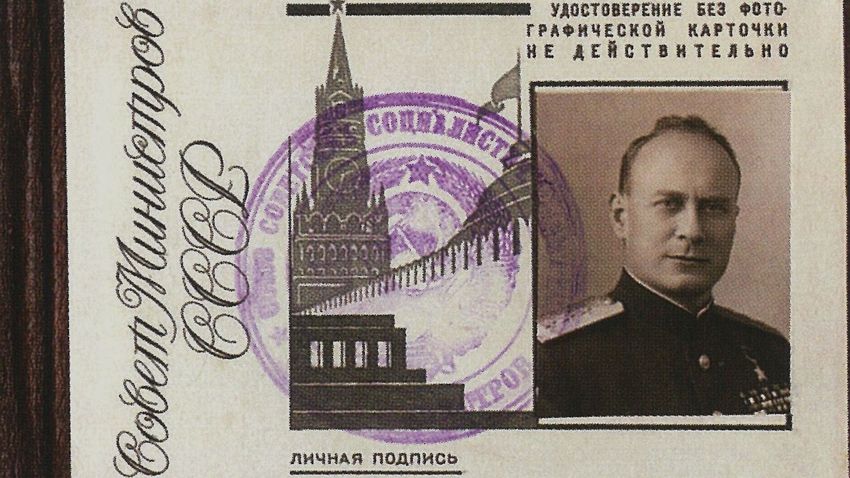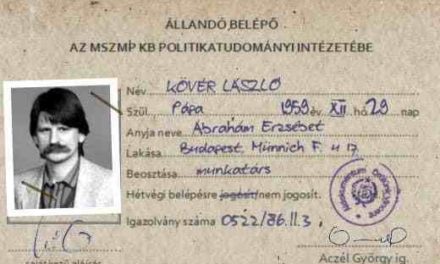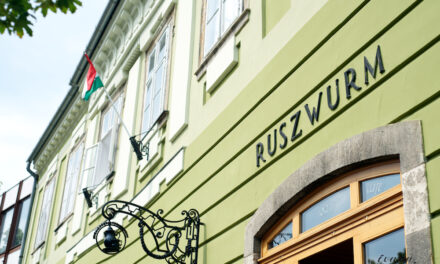The secret diary of the first chairman of the KGB, a sensational document with Hungarian aspects, has been published in Hungarian.
According to the historian Barbara Bank, member of the National Remembrance Committee and assistant professor at PPKE BTK, the volume points to connections that have not been discovered so far.
In an interview with Mandiner, he said: the former head of the KGB, Ivan Aleksandrovich Serov, died in 1990, and 25 years later, his notes and diaries were accidentally found hidden in the wall of his dacha's garage in two suitcases.
The contents of the suitcases were published in Russian in 2016 in a book that journalist László Domonkos bought in a Moscow bookstore, and I also bought it a year later when I visited Moscow in connection with a project aimed at mapping Gulag camps. That's when the administration and contact started, so that it could be published in Hungarian as well. It didn't matter who would be the one to translate it, and whether he could translate the original text exactly.
– As we know, this was excellent, thanks to József Goretity. What conclusions can the historian draw with the new information?
It is important to clarify that this text is a diary or a memoir: a subjective source, not an official report. By comparing it with previous source materials, we may arrive at previously undiscovered and unsupported connections.
In this case, we can rather talk about the fact that we can get to know the events described by him from Serov's point of view, and through his personal comments we get an insight into each story. So it is interesting to read and study the way of thinking and preparation of the chairman of the KGB. To see the internal fights and intrigues within the state security agencies; nor is it uninteresting how he saw Stalin, how he handled their conversations and meetings. You can also read about deployments, campaigns, and their preparation and background work. These are not only interesting readings, but also contribute to learning about the functioning of the KGB and its predecessor organizations.
Seeing the big machine from the perspective of one of the main controllers - well, it's not an everyday opportunity.
However, it is worth approaching Serov's text with reservations and criticism, as he wrote all of this in such a way that he did not publish or reveal persons or state secrets.
- As it turned out, Serov, the chairman of the KGB, lived through 1956 on the streets of Pest. What do we learn about the revolution?
I think that novelty is not the right word here either, but rather how one of the "perpetrators", one of the key figures in the Soviet machinery that crushed the revolution, saw the events. Of course, it is a very interesting addition for Hungarian historiography that Szerov already arrived in Hungary on October 24, before Mikoyan and Suszlov, he got information on the spot. The way he saw Imre Nagy is also exciting: based on the information and impressions he received, he says that Imre Nagy wants to be the head of Hungary. It is also of great importance that Serov spoke at the convened meeting of the Political Committee on October 24 and declared that the insurgents must be finished, because the situation could take a bad turn.
Knowing this sentence, it is worth thinking about the circumstances of the firefight in front of the Parliament.
– What does Serov write about the next few days?
Records were broken between October 25th and October 28th. On October 31, Serov flew back to Moscow and on November 2, in the evening hours, he met Ferenc Münnich and János Kádár at a meeting of the Soviet Central Committee.
Khrushchev entrusted Konyev with the command of the Soviet army troops, and Serov was sent back to Hungary as a representative of the Central Committee - thus with a new authority. When Szerov arrived on November 3, he gave the order for the operation to suppress the revolution to Malynyin and Konyev, and then began to direct the operation from the background, the primary goal of which was to disarm and capture the representatives of the Hungarian government.
"Could this have been some kind of tactic?"
Yes, because anyone who reads the memoir may have a feeling of "déjà vu" at this point: the leaders of the Polish resistance were captured using a similar method, which was also commanded by Serov. The volume also contains supplements regarding the extradition of Imre Nagy and his companions from the Yugoslav embassy and their transport to Romania. Szerov's narrative supports the fact that he coordinated with the Romanian comrades and that is how the Imré Nagys ended up in Snagov. Szerov's mission to Hungary did not end even here, as he began the 1957 New Year with a trip to Hungary in the company of Khrushchev. The next day they flew back to Moscow.
Szerov was awarded the first degree of the Order of Kutuzov for his role in the suppression of the Hungarian revolution and freedom struggle, for the "execution of a special task" received from the Soviet government. What may serve as a novelty for historians and requires further research does not come from Szerov's diary, but from an unpublished interview with Szerov, which reveals that plans were also prepared from the American embassy to kidnap Archbishop József Mindszenty of Esztergom.
– How do Szerov's perceptive notes shed light on the methods of the Soviet-Communist conquest of Hungary?
In the theories and practical methods of Lenin and the Bolsheviks on the seizure and appropriation of power, the use of terror played a prominent role. This can also be observed in Soviet military thinkers.
Marshal Tukhachevsky wrote in the mid-1920s that conquering new territories and maintaining power after the destruction of the enemy can only be done through intimidation and terror.
In order to carry out terror, armed violence organizations were organized in all occupied countries based on the Soviet model and experience. In Hungary, the "culmination" of this process was the operation of the dreaded State Defense Authority. The people of the Soviet leadership were there in all important areas, the so-called "consultants" and specialists were integrated into the managements of central bodies - ministries, armed forces - and industrial companies. It is not surprising that the Serovs were able to find their way around in every case. Of course, the Soviet leadership had a say in the process of appointing high and important personnel positions.
- In the cover text, they write about a very precise and convincing description of the "decades of Soviet barbarism". What do we mean by this? What aspects arise?
When we think of the concept of "Sovietization", what comes to mind is the active nature of the process, in the ordinary sense of conquest, colonization and the imposition of the Soviet ideology and state organization model, the Soviet way of life on the occupied territories.
Barbarism, on the other hand, also refers to the kind of destruction all of this entailed in terms of culture, Hungarian traditions and holidays, and religiosity, not to mention the old Hungarian statehood, the legal system, and the social structure. In addition, the representatives of the Soviet power were violent: if they met with contradiction or resistance, if an uprising or revolution broke out in the individual areas, they retaliated cruelly. This also happened in Hungary with the suppression of the revolution.












